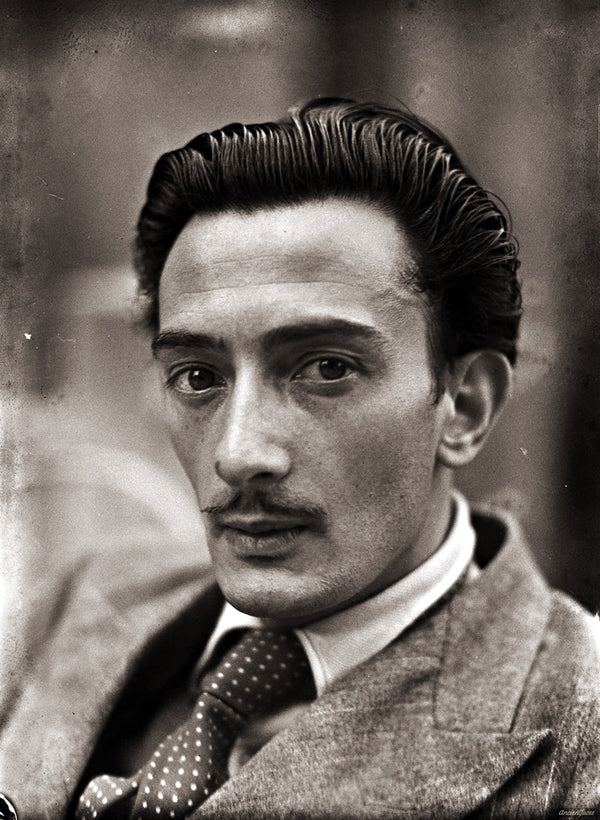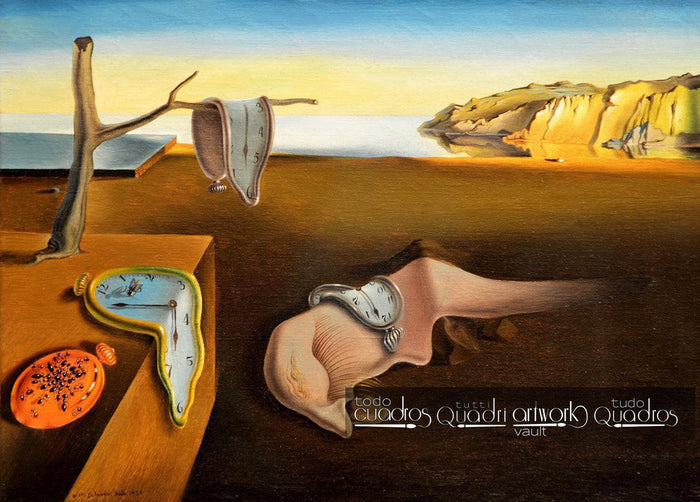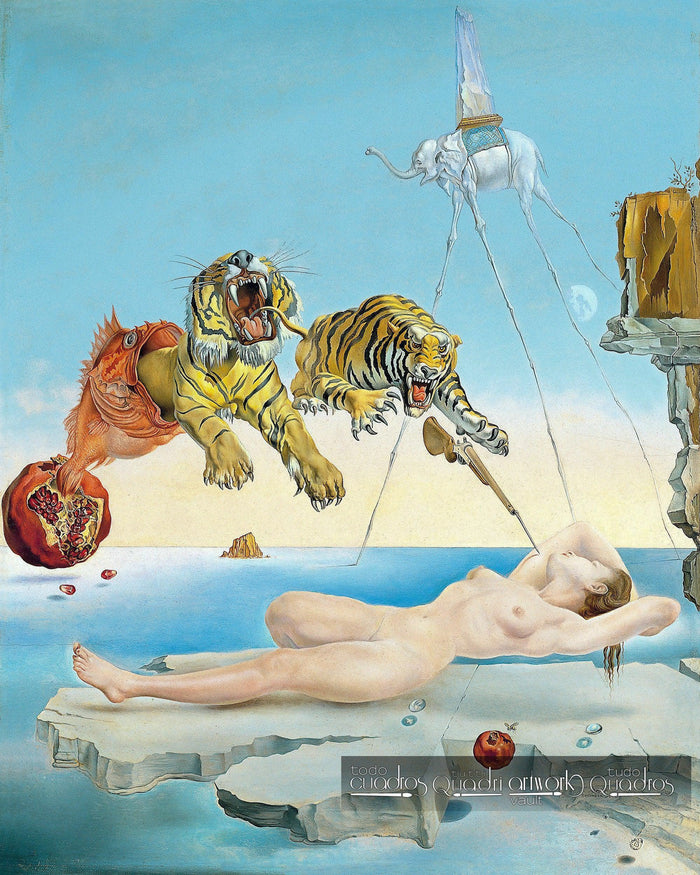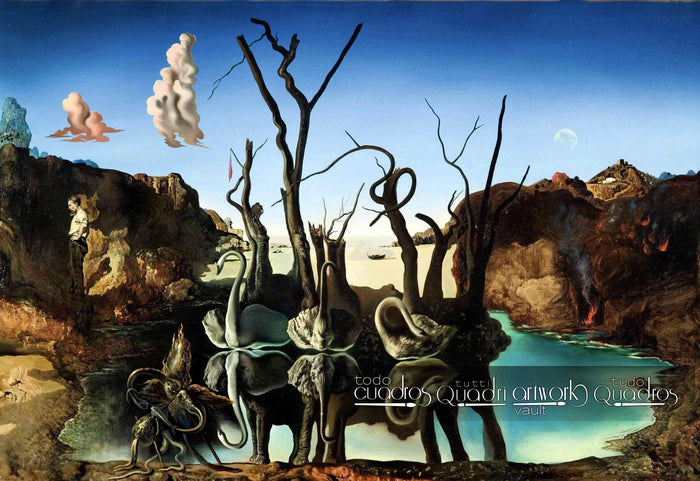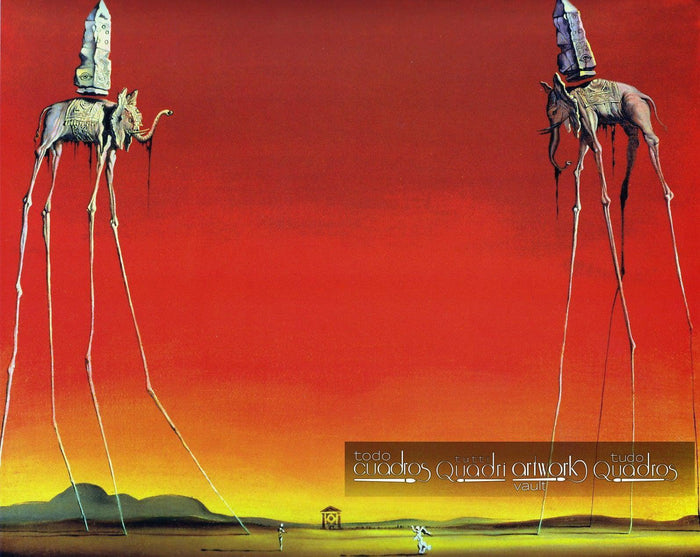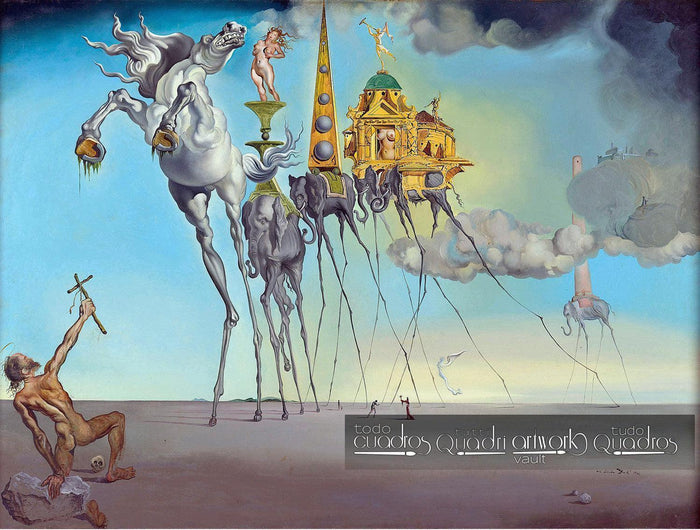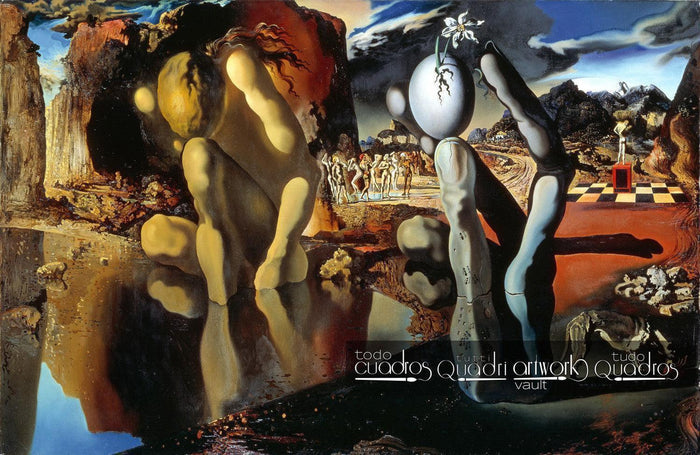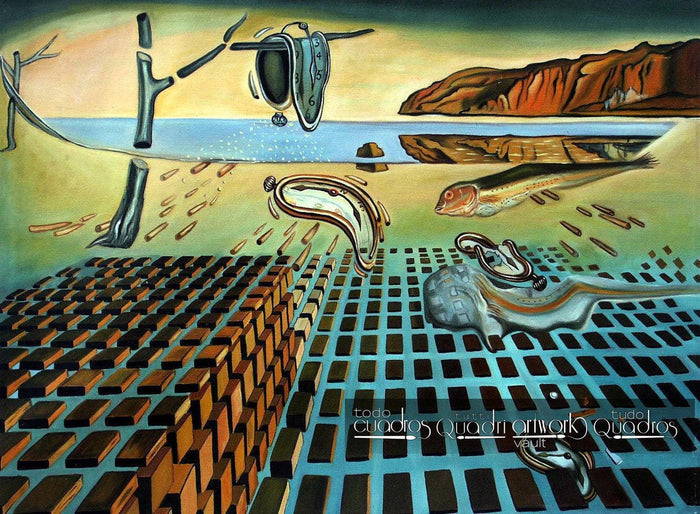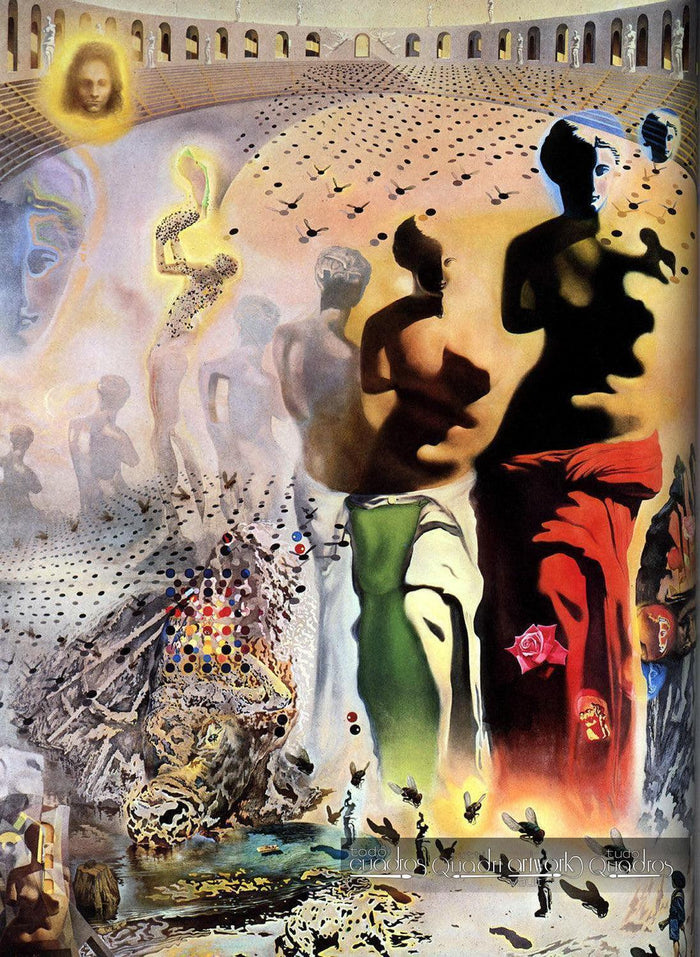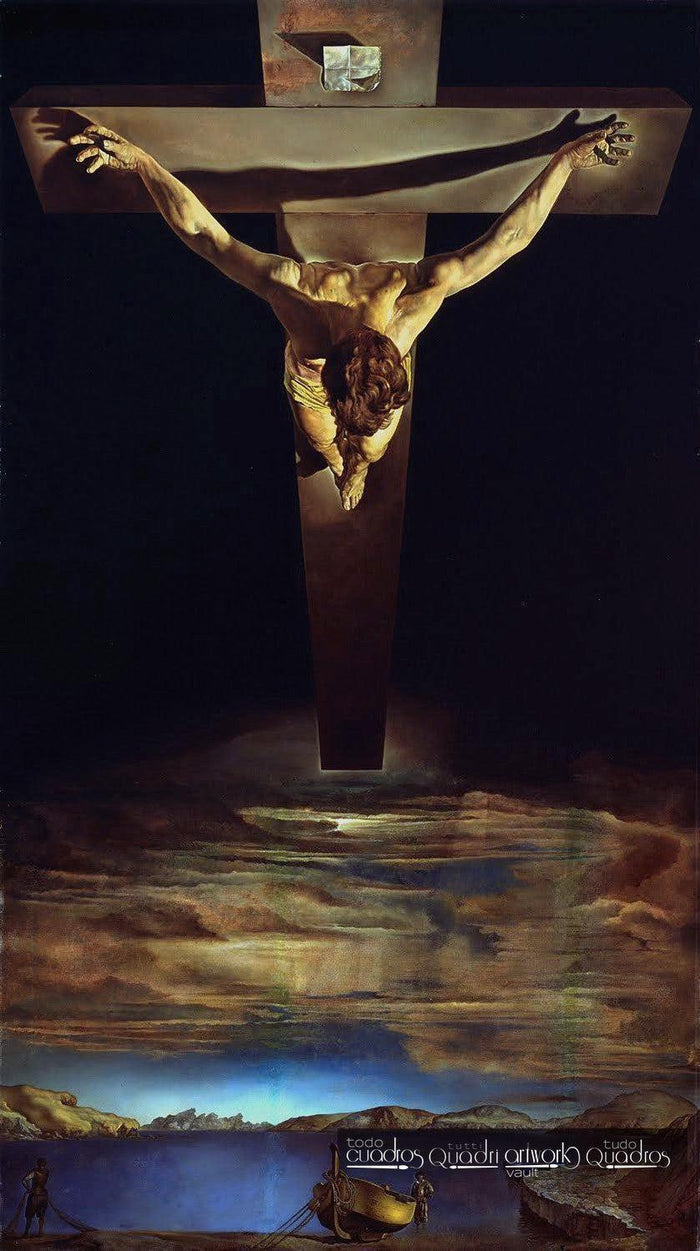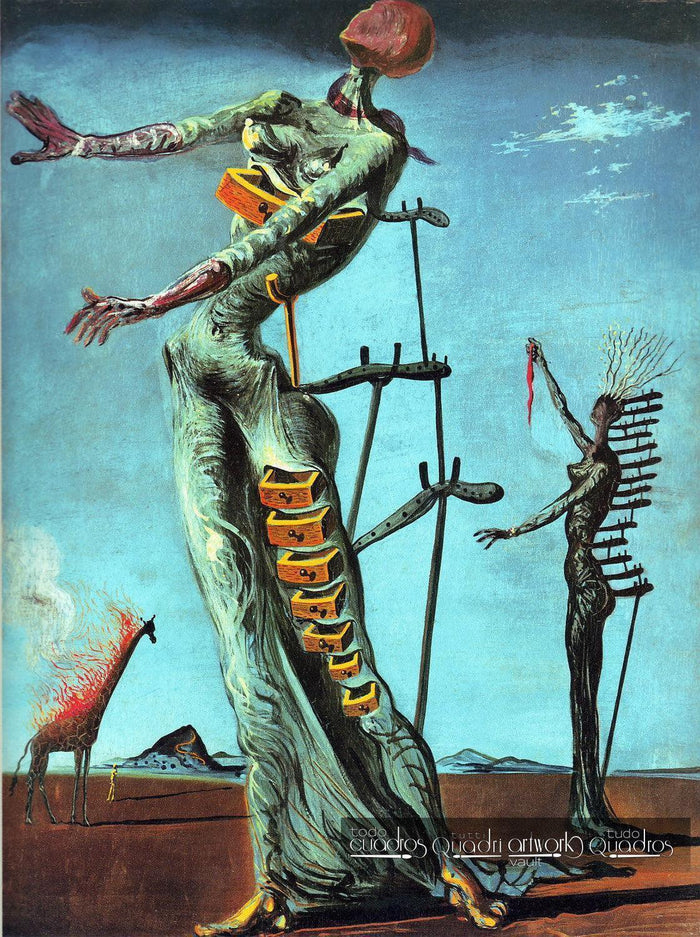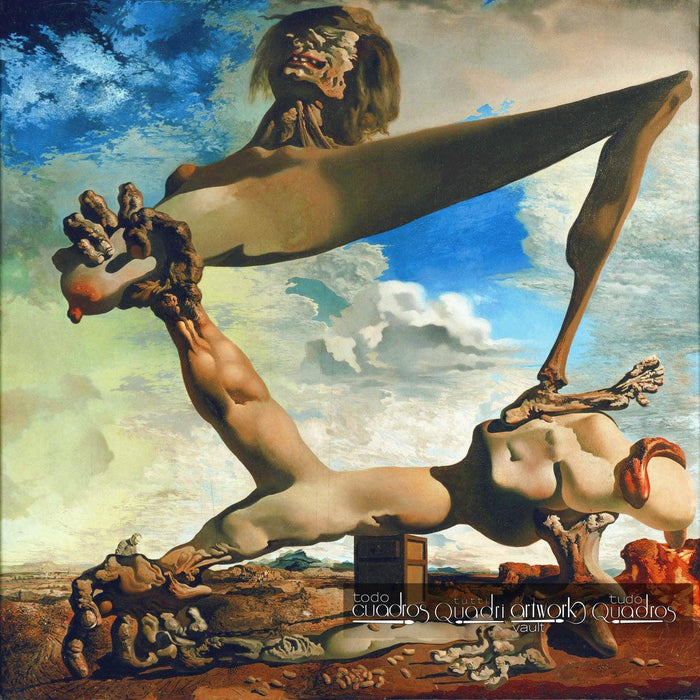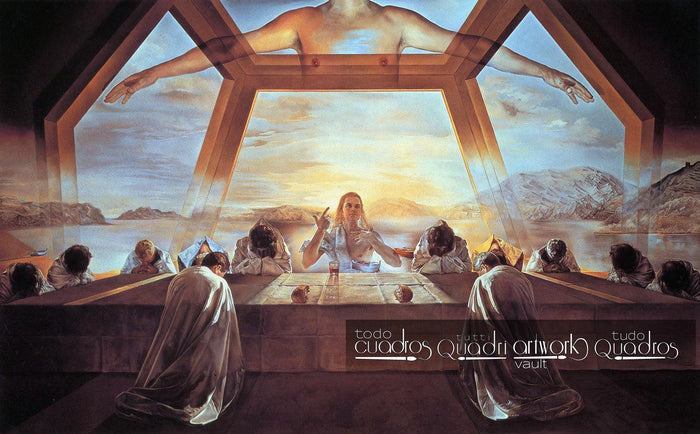Dalí Paintings
Dalí’s pictorial work includes approximately 1,500 paintings, of which we present here the 12 most important.
1. The Persistence of Memory
| Author: | Salvador Dalí |
|---|---|
| Type: | Painting |
| Style: | Surrealism |
| Medium | Oil |
| Support: | Canvas |
| Year: | 1931 |
| Located: | MoMA museum, New York. |
It is the most emblematic work of Salvador Dalí and one of the most recognized pieces of global Surrealism, also known as “The Soft Watches”. In this painting, the artist explores his interest in the passage of time, the transformation of matter, and the shifting perception of reality — subjects that would define much of his career.
Read more2. Dream Caused by the Flight of a Bee Around a Pomegranate a Second Before Awakening
| Author: | Salvador Dalí |
|---|---|
| Original Title: | Sueño causado por el vuelo de una abeja alrededor de una granada un segundo antes de despertar |
| Type: | Painting |
| Style: | Surrealism |
| Medium | Oil |
| Support: | Wood Panel |
| Year: | 1944 |
| Located: | Thyssen Museum, Madrid. |
It is one of the most recognizable paintings of the artist, in it are recurrent figures that the artist would use throughout his career: elephants with stilted legs, his wife Gala, an insect, and a lifeless landscape.
The importance of the work lies in the extreme creativity it displays, combined with impeccable academic technique.
3. Swans Reflecting Elephants
| Author: | Salvador Dalí |
|---|---|
| Type: | Painting |
| Style: | Surrealism |
| Medium | Oil |
| Support: | Canvas |
| Year: | 1937 |
Surrealist composition with masterful visual play. In this case, the artist transforms the reflection of trees and swans on a lake into perfectly outlined elephants.
4. The Elephants
| Author: | Salvador Dalí |
|---|---|
| Type: | Painting |
| Style: | Surrealism |
| Medium | Oil |
| Support: | Canvas |
| Year: | 1948 |
| Located: | MoMA museum, New York. |
5. The Temptation of St. Anthony
| Author: | Salvador Dalí |
|---|---|
| Type: | Painting |
| Style: | Surrealism |
| Medium | Oil |
| Support: | Canvas |
| Year: | 1946 |
| Located: | Complejo Museos Reales de Bellas Artes, Bélgica |
This is one of the most representative works of Spanish surrealism, painted in 1946, in oil on canvas, measuring 35.43 x 47.24 inches.
St. Anthony the Great of the 3rd century, one of the first Christian hermits, is depicted in the desert fighting against the temptations of fame, sex, wealth, and power. Each of them is mounted on the back of an animal. The Saint interposes the Cross between himself and the temptations, as the only hope to ward them off.
6. Metamorphosis of Narcissus
| Author: | Salvador Dalí |
|---|---|
| Type: | Painting |
| Style: | Surrealism |
| Medium | Oil |
| Support: | Canvas |
| Year: | 1937 |
This painting is considered to fuse three elements that only Dalí could bring together: classical Greece, psychoanalysis, and science.
Painted in 1937, the artist personally showed the painting to Sigmund Freud, who was amazed at such a display of talent and symbolism in the work.
7. The Disintegration of the Persistence of Memory
| Author: | Salvador Dalí |
|---|---|
| Type: | Painting |
| Style: | Surrealism |
| Medium | Oil |
| Support: | Canvas |
| Year: | 1954 |
| Located: | Salvador Dalí Museum, Florida, EE. UU. |
8. The Hallucinogenic Toreador
| Author: | Salvador Dalí |
|---|---|
| Type: | Painting |
| Style: | Surrealism |
| Medium | Oil |
| Support: | Canvas |
| Year: | 1954 |
| Located: | Salvador Dalí Museum, Florida, EE. UU. |
It is one of the artist's most heterogeneous compositions. Among the elements presented in this work are his wife Gala, the goddess Venus, the colors of the Spanish flag, a bullring, insects, some geometric shapes, a Dalmatian dog, and a landscape of Cape de Creus (Catalonia). All of this is grouped together with visual games and in perfect harmony with holographic experimentation.
9. Christ of Saint John of the Cross
| Author: | Salvador Dalí |
|---|---|
| Type: | Painting |
| Style: | Surrealism |
| Medium | Oil |
| Support: | Canvas |
| Year: | 1951 |
| Genre: | Religious paintings |
| Located: | Museo Kelvingrove, Escocia |
Surrealist painting of religious inspiration, painted in 1951.
At the time Dalí created this work, he was already a man quite close to the Catholic faith; nevertheless, he found several detractors who did not understand the modernist character and the original perspective of the work.
The central figure is based on a small drawing that Saint John of the Cross had made in the 16th century.
10. The Burning Giraffe
| Author: | Salvador Dalí |
|---|---|
| Type: | Painting |
| Style: | Surrealism |
| Medium | Oil |
| Support: | Canvas |
| Year: | 1937 |
| Located: | Museo de Arte de Basilea, Suiza |
This is an apocalyptic motif, where the painter reveals all kinds of psychological facets related to: politics, war, women, and men.
11. Soft Construction with Boiled Beans (Premonition of Civil War)
| Author: | Salvador Dalí |
|---|---|
| Type: | Painting |
| Style: | Surrealism |
| Medium | Oil |
| Support: | Canvas |
| Year: | 1936 |
| Located: | Philadelphia Museum of Art. |
Composition done in oil, painted in 1936, 6 months before the Spanish Civil War began.
It is considered a premonitory work in this sense, the artist foresaw the horrors of the war that was about to begin.
12. The Sacrament of the Last Supper
| Author: | Salvador Dalí |
|---|---|
| Type: | Painting |
| Style: | Surrealism |
| Medium | Oil |
| Support: | Canvas |
| Year: | 1955 |
Biblical scene painted in oil. Towards the end of his life, Dalí approached the Catholic religion; from this period come this and other paintings of scenes inspired by the New Testament.
Buy it in the Dalí oil paintings section.
Related famous painters:
↑Back to top
